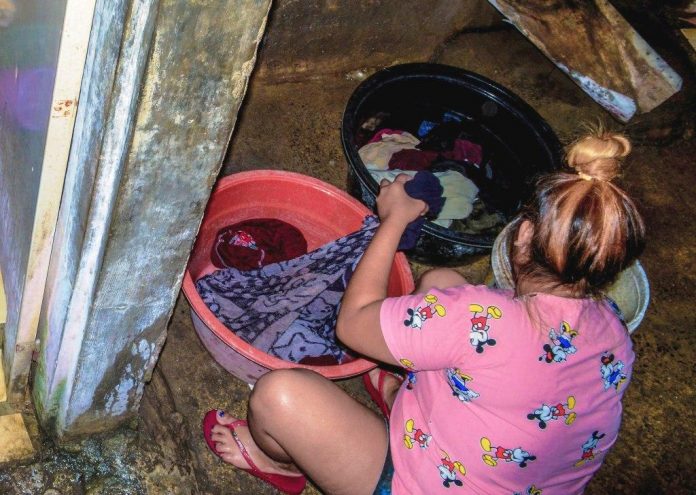
ILOILO City – The City Disaster Risk Reduction and Management Council (CDRRMC) has agreed to recommend placing this city under a state of calamity.
Dry conditions due to the El Niño phenomenon are affecting 117,265 individuals or 24.92 percent of the 472,491 projected 2019 total population of the city, the CDRRMC learned during a meeting yesterday.
The figures were gathered through a “rapid assessment” of the city’s barangays to determine the extent of El Niño’s adverse effects, according to Donna Magno, member of the council and head of the City Disaster Risk Reduction and Management Office (CDRRMO).
Among others findings, water was getting scarce, said Magno.
In fact, she said, the barangay council of Bo. Obrero in Lapuz district already declared a state of calamity as 60 percent of its population is suffering mainly from water scarcity.
Other barangay councils, said Magno, passed resolutions appealing for help – specifically additional water supply – from the city government such as those of San Juan and Cochero in Molo district and Mansaya in La Paz.
“The council agreed to recommend a declaration of a state of calamity so that the city government could use its quick response fund,” said Magno.
Iloilo City has a P115-million DRRM fund, 30 percent of which could be used as QRF once a state of calamity is declared.
But the city may not have seen the worst yet. The current “mild” El Niño may cause drier and warmer conditions nationwide this month, warned the Philippine Atmospheric, Geophysical and Astronomical Services Administration (Pagasa) as it announced the onset of the dry season early this month.
“Normally, the dry season begins in April. Since it started early, the duration will also be a bit prolonged,” said Pagasa climate monitoring chief Analiza Solis.
It is the Sangguniang Panlungsod (SP) which has the authority to declare a state of calamity.
Magno said Mayor Jose Espinosa III, as chairman of the CDRRMC, would submit the recommendation to the city council.
Councilor Lady Julie Grace Baronda, chairperson of the SP committee on social services and who presided the CDRRMC meeting yesterday, is expected to sponsor a resolution at the city council declaring a state of calamity.
El Niño also hit the city in 2013, 2015 and 2016. Several barangays suffered from water scarcity.
In April 21, 2015 the SP passed a resolution declaring the entire city under the state of imminent water crisis because of acute water shortage. A week after, it declared a state of calamity.
In its Climate Outlook for the year, Pagasa stated that the first three months of 2019 would likely be more sweltering compared to the same period in 2018 because of lessened rainfall and dry winds caused by El Niño.
It expects the dryness to begin easing around May, forecasting near-normal rainfall by then in most parts of Northern Luzon and Mindanao. Near-normal rainfall is possible in most parts of the Visayas and Mindanao this June.
Pagasa described drought as three consecutive months of way below normal rainfall (60 percent reduction from average) or five consecutive months of below normal rainfall condition (21 percent to 60 percent reduction from average).
A “dry spell” is defined as three consecutive months of below normal rainfall (21 percent to 60 percent reduction from average) or two months of consecutive way below normal rainfall (more than 60 percent reduction from average).
Dry condition is defined as having two consecutive months of below normal rainfall (21-60 percent drop in average rainfall)./PN





